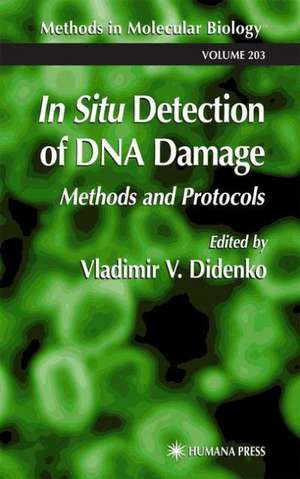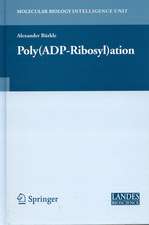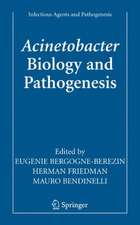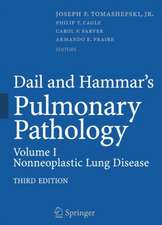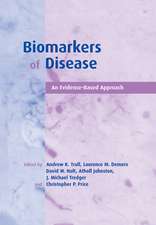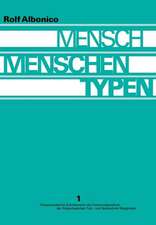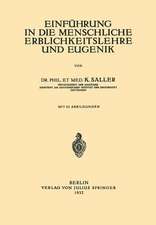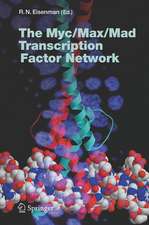In Situ Detection of DNA Damage: Methods and Protocols: Methods in Molecular Biology, cartea 203
Editat de Vladimir V. Didenkoen Limba Engleză Paperback – 10 noi 2010
| Toate formatele și edițiile | Preț | Express |
|---|---|---|
| Paperback (1) | 717.00 lei 6-8 săpt. | |
| Humana Press Inc. – 10 noi 2010 | 717.00 lei 6-8 săpt. | |
| Hardback (1) | 726.32 lei 6-8 săpt. | |
| Humana Press Inc. – 30 apr 2002 | 726.32 lei 6-8 săpt. |
Din seria Methods in Molecular Biology
- 9%
 Preț: 791.63 lei
Preț: 791.63 lei - 23%
 Preț: 598.58 lei
Preț: 598.58 lei - 20%
 Preț: 882.98 lei
Preț: 882.98 lei -
 Preț: 252.05 lei
Preț: 252.05 lei - 5%
 Preț: 802.70 lei
Preț: 802.70 lei - 5%
 Preț: 729.61 lei
Preț: 729.61 lei - 5%
 Preț: 731.43 lei
Preț: 731.43 lei - 5%
 Preț: 741.30 lei
Preț: 741.30 lei - 5%
 Preț: 747.16 lei
Preț: 747.16 lei - 15%
 Preț: 663.45 lei
Preț: 663.45 lei - 18%
 Preț: 1025.34 lei
Preț: 1025.34 lei - 5%
 Preț: 734.57 lei
Preț: 734.57 lei - 18%
 Preț: 914.20 lei
Preț: 914.20 lei - 15%
 Preț: 664.61 lei
Preț: 664.61 lei - 15%
 Preț: 654.12 lei
Preț: 654.12 lei - 18%
 Preț: 1414.74 lei
Preț: 1414.74 lei - 5%
 Preț: 742.60 lei
Preț: 742.60 lei - 20%
 Preț: 821.65 lei
Preț: 821.65 lei - 18%
 Preț: 972.30 lei
Preț: 972.30 lei - 15%
 Preț: 660.49 lei
Preț: 660.49 lei - 5%
 Preț: 738.41 lei
Preț: 738.41 lei - 18%
 Preț: 984.92 lei
Preț: 984.92 lei - 5%
 Preț: 733.29 lei
Preț: 733.29 lei -
 Preț: 392.60 lei
Preț: 392.60 lei - 5%
 Preț: 746.26 lei
Preț: 746.26 lei - 18%
 Preț: 962.66 lei
Preț: 962.66 lei - 23%
 Preț: 860.22 lei
Preț: 860.22 lei - 15%
 Preț: 652.64 lei
Preț: 652.64 lei - 5%
 Preț: 1055.50 lei
Preț: 1055.50 lei - 23%
 Preț: 883.87 lei
Preț: 883.87 lei - 5%
 Preț: 1141.13 lei
Preț: 1141.13 lei - 19%
 Preț: 491.89 lei
Preț: 491.89 lei - 5%
 Preț: 1038.86 lei
Preț: 1038.86 lei - 5%
 Preț: 524.16 lei
Preț: 524.16 lei - 18%
 Preț: 2122.34 lei
Preț: 2122.34 lei - 5%
 Preț: 1299.23 lei
Preț: 1299.23 lei - 5%
 Preț: 1339.12 lei
Preț: 1339.12 lei - 18%
 Preț: 1390.26 lei
Preț: 1390.26 lei - 18%
 Preț: 1395.63 lei
Preț: 1395.63 lei - 18%
 Preț: 1129.65 lei
Preț: 1129.65 lei - 18%
 Preț: 1408.26 lei
Preț: 1408.26 lei - 18%
 Preț: 1124.92 lei
Preț: 1124.92 lei - 18%
 Preț: 966.27 lei
Preț: 966.27 lei - 5%
 Preț: 1299.99 lei
Preț: 1299.99 lei - 5%
 Preț: 1108.51 lei
Preț: 1108.51 lei - 5%
 Preț: 983.76 lei
Preț: 983.76 lei - 5%
 Preț: 728.16 lei
Preț: 728.16 lei - 18%
 Preț: 1118.62 lei
Preț: 1118.62 lei - 18%
 Preț: 955.25 lei
Preț: 955.25 lei - 5%
 Preț: 1035.62 lei
Preț: 1035.62 lei
Preț: 717.00 lei
Preț vechi: 754.74 lei
-5% Nou
Puncte Express: 1076
Preț estimativ în valută:
137.21€ • 148.99$ • 115.26£
137.21€ • 148.99$ • 115.26£
Carte tipărită la comandă
Livrare economică 23 aprilie-07 mai
Preluare comenzi: 021 569.72.76
Specificații
ISBN-13: 9781617372728
ISBN-10: 1617372722
Pagini: 336
Ilustrații: XVII, 313 p. 164 illus., 31 illus. in color.
Dimensiuni: 152 x 229 x 18 mm
Greutate: 0.45 kg
Ediția:Softcover reprint of hardcover 1st ed. 2002
Editura: Humana Press Inc.
Colecția Humana
Seria Methods in Molecular Biology
Locul publicării:Totowa, NJ, United States
ISBN-10: 1617372722
Pagini: 336
Ilustrații: XVII, 313 p. 164 illus., 31 illus. in color.
Dimensiuni: 152 x 229 x 18 mm
Greutate: 0.45 kg
Ediția:Softcover reprint of hardcover 1st ed. 2002
Editura: Humana Press Inc.
Colecția Humana
Seria Methods in Molecular Biology
Locul publicării:Totowa, NJ, United States
Public țintă
Professional/practitionerCuprins
Labeling DNA Breaks Using Terminal Transferase (TUNEL Assay).- Labeling DNA Damage with Terminal Transferase.- TUNEL Assay.- Electron Microscopic Detection of DNA Damage Labeled by TUNEL.- Quantitative Differentiation of Both Free 3? OH and 5? OH DNA Ends Using Terminal Transferase-Based Labeling Combined with Transmission Electron Microscopy.- Determination of Three-Dimensional Distribution of Apoptotic DNA Damage by Combination of TUNEL and Quick-Freezing and Deep-Etching Techniques.- In Situ Detection of DNA Strand Breaks in Analysis of Apoptosis by Flow- and Laser-Scanning Cytometry.- Labeling DNA Breaks Using DNA Polymerase I or its Klenow Fragment.- DNA Damage Detection Using DNA Polymerase I or its Klenow Fragment.- Labeling DNA Breaks In Situ by Klenow Enzyme.- In Situ Nick Translation at the Electron Microscopic Level.- Labeling DNA Breaks Using Ligase.- In Situ DNA Ligation as a Method for Labeling Apoptotic Cells in Tissue Sections.- Detection of Specific Double-Strand DNA Breaks and Apoptosis In Situ Using T4 DNA Ligase.- In Situ Detection of Double-Strand DNA Breaks with Terminal 5?OH Groups.- Detection of DNA Breaks in Agarose Trapped Cells: Comet Assay and Related Techniques.- The Comet Assay.- The Comet Assay.- Ultrasensitive Detection of DNA Damage by the Combination of the Comet and TUNEL Assays.- Application of FISH to Detect DNA Damage.- Detection of Modified Bases and AP Sites in DNA.- Simultaneous In Situ Detection of DNA Fragmentation and RNA/DNA Oxidative Damage Using TUNEL Assay and Immunohistochemical Labeling for 8-Hydroxy-2?-Deoxyguanosine (8-OHdG).- The In Situ Detection of Apurinic/Apyrimidinic Sites and DNA Breaks Bearing Extension Blocking Termini.- Indirect and General Markers of DNA Damage.- Markers of Poly (ADP-Ribose)Polymerase Activity as Correlates of DNA Damage.- Ultrasound Imaging of Apoptosis.- p53 Induction as an Indicator of DNA Damage.- Detection of Caspases Activation In Situ by Fluorochrome-Labeled Inhibitors of Caspases (FLICA).
Recenzii
"Investigators working in the general area of DNA damage, including apoptosis, will find this book of use. The protocols are sufficiently detailed so as to allow experienced laboratory workers access to the described methods. . .the broad spectrum of methods described allows for individual investigators to exercise options."-Doody's Health Sciences Book Review Journal
"Here, a panel of experts describe all the major in situ techniques for studying DNA damage and apoptosis, and how approaches originally designed to label apoptotic cells can be used for DNA damage analysis (and vice versa)." - European Journal of Histochemistry
"Here, a panel of experts describe all the major in situ techniques for studying DNA damage and apoptosis, and how approaches originally designed to label apoptotic cells can be used for DNA damage analysis (and vice versa)." - European Journal of Histochemistry
Textul de pe ultima copertă
Detection and analysis of DNA damage is critically important in the study of the widest variety of biological phenomena, ranging from apoptosis and aging to heart diseases and anticancer drug development. In In Situ Detection of DNA Damage: Methods and Protocols, Vladimir Didenko and a panel of experts describe all the major in situ techniques for studying DNA damage and apoptosis, and show how approaches originally designed to label apoptotic cells can be used for DNA damage analysis (and vice versa). The readily reproducible techniques presented here include all those designed to detect specific single- and double-stranded DNA breaks in tissue sections while using polymerases, ligases, nucleases, and kinases. In-depth protocols for single-cell electrophoresis (comet assay) are presented, as well as those for the detection of indirect markers of DNA damage and modified bases. Technical reviews discuss specificity, sensitivity, advantages, and limitations of the techniques described, and compare them with alternative approaches.
State-of-the-art and highly practical, In Situ Detection of DNA Damage: Methods and Protocols presents for the first time a complete set of enzymatic methods for determining DNA breaks, and will greatly facilitate the work of all those studying not only the in situ detection of DNA damage but also the labeling of apoptotic cells.
State-of-the-art and highly practical, In Situ Detection of DNA Damage: Methods and Protocols presents for the first time a complete set of enzymatic methods for determining DNA breaks, and will greatly facilitate the work of all those studying not only the in situ detection of DNA damage but also the labeling of apoptotic cells.
Caracteristici
Includes supplementary material: sn.pub/extras
